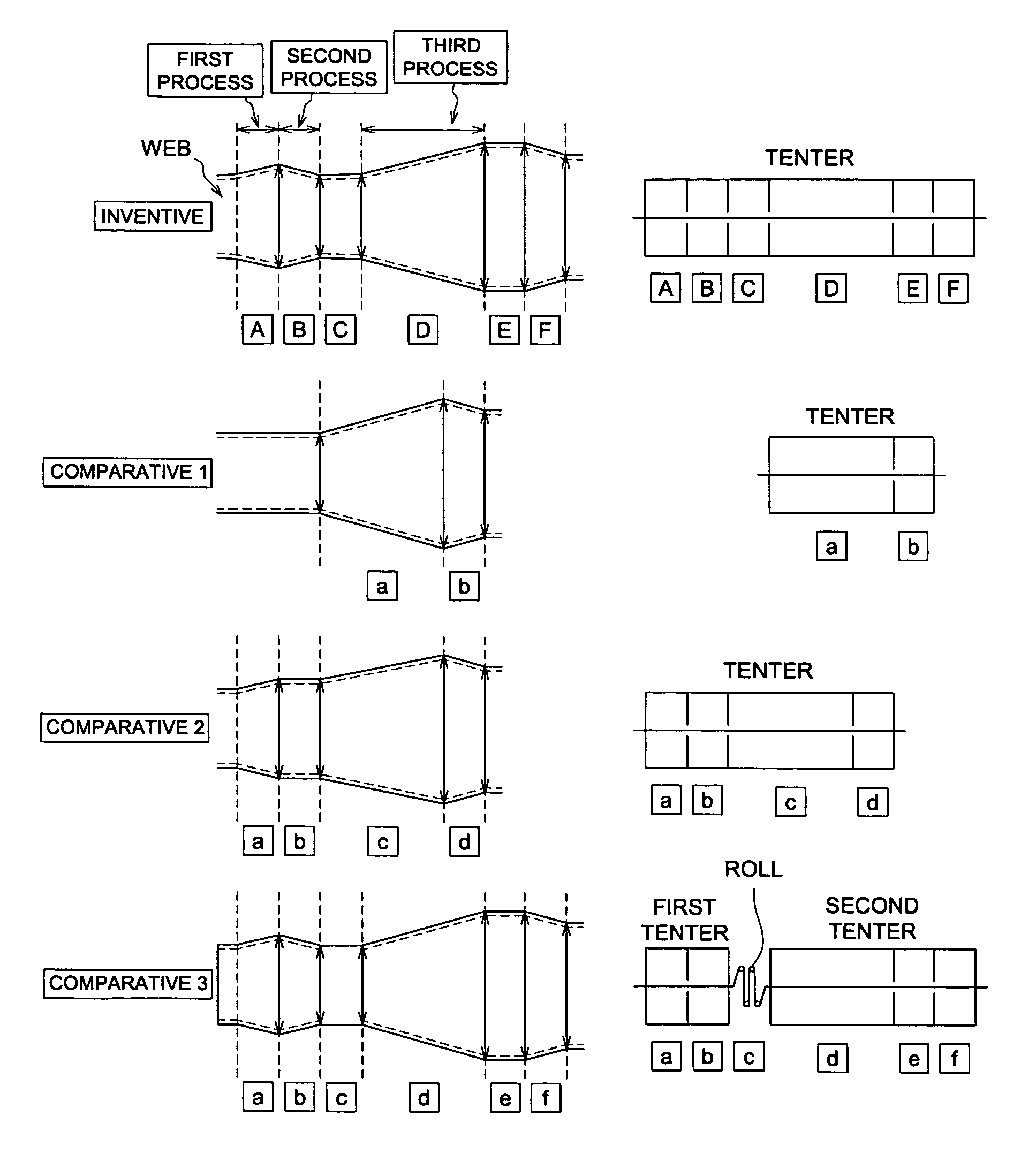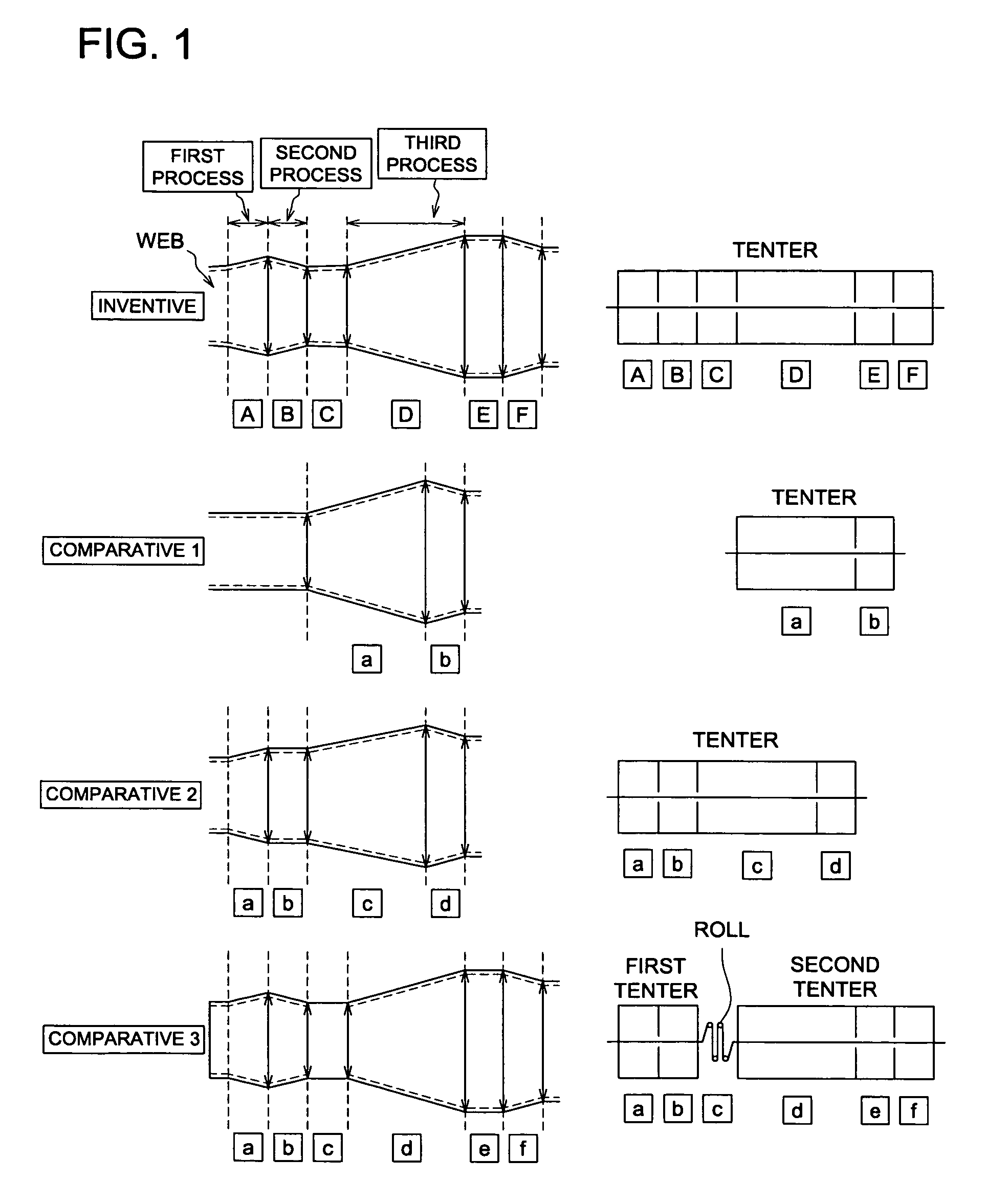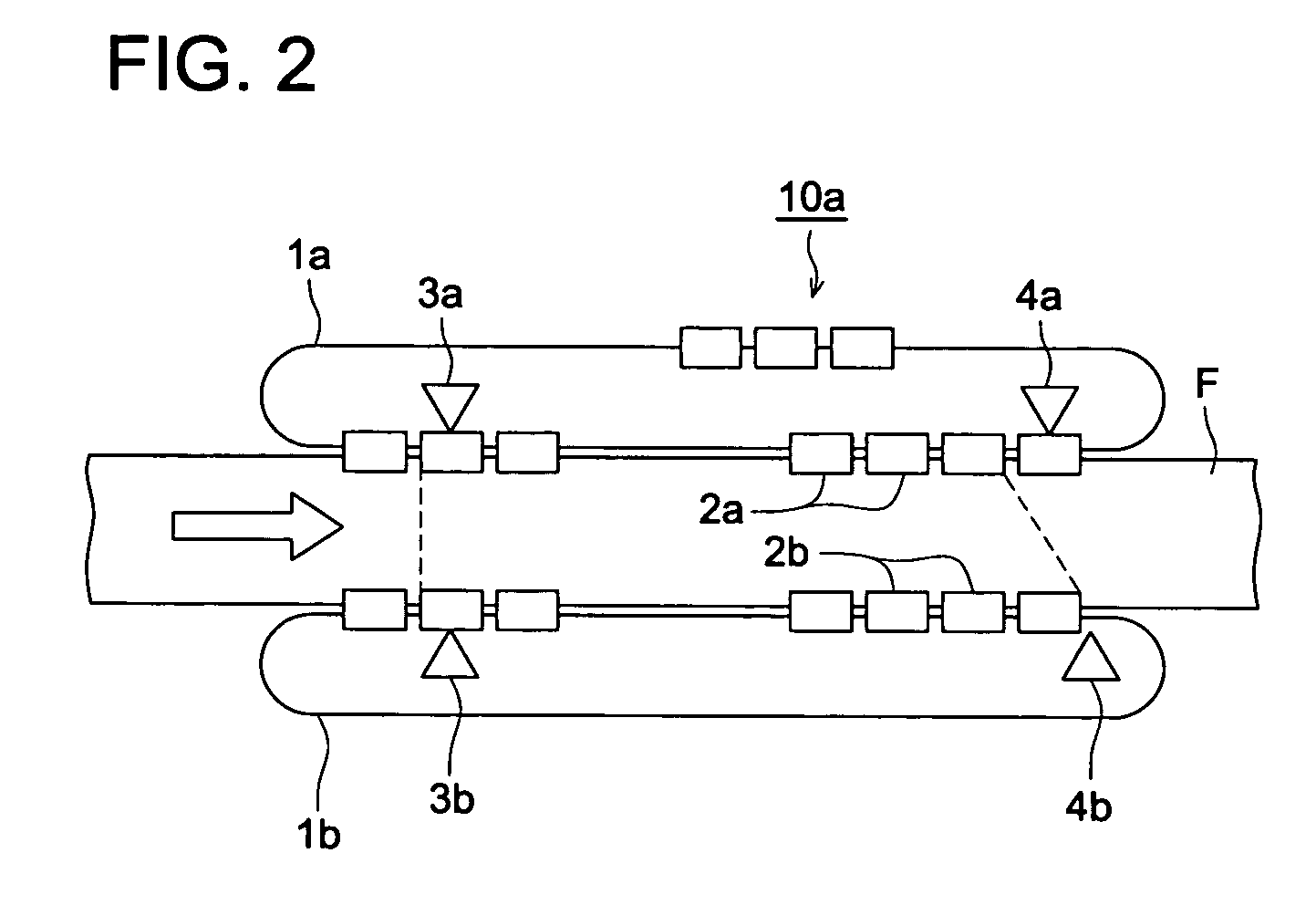Retardation film, method for producing the same, polarizing plate and liquid crystal display
a technology of retardation film and polarizing plate, which is applied in the direction of instruments, other domestic objects, transportation and packaging, etc., can solve the problems of dimensional stability, significant decrease in contrast, and inability to improve the viewing angle of retardation film, so as to improve the dimensional stability of the polarizing plate, enhance the front contrast of the liquid crystal display, and minimize light leakage
- Summary
- Abstract
- Description
- Claims
- Application Information
AI Technical Summary
Benefits of technology
Problems solved by technology
Method used
Image
Examples
example of synthesis 1
Synthesis of Illustrated Compound A-1
[0361]After heating 24.6 g (0.116 mol) of 3,4,5-trimethoxybenzoic acid, 100 ml of toluene and 1 ml of N—N-dimethylformamide to 60° C., 15.2 g (0.127 mol) of thionyl chloride was slowly added dropwise, and this mixture was heated at 60° C. for two hours. Then 15.1 g (0.127 mol) of 4-cyanophenol dissolved previously into 50 ml of acetonitryl was slowly added dropwise into this solution. After that, the solution was heated and stirred at 60° C. for 3 hours, and the reaction solution was cooled down to the room temperature. Then ethyl acetate and water were used to perform liquid separation, and sodium sulfate was used to remove water from the organic phase having been obtained. The solvent was distilled off under reduced pressure, and 100 ml of acetonitryl was added to the solid having been obtained, thereby recrystalizing the mixture. The acetonitryl solution was cooled down to the room temperature, and the crystal having been precipitated was reco...
example of synthesis 2
Synthesis of Illustrated Compound A-2
[0364]After heating 106.1 g (0.5 mol) of 2,4,5-trimethoxybenzoic acid, 340 ml of toluene and 1 ml of dimethylformamide to 60° C., 65.4 g (0.55 mol) of thionyl chloride was slowly added dropwise, and this mixture was heated for 2 hours at 65° C. through 70° C. Then 71.5 g (0.6 mol) of 4-cyanophenol previously dissolved into 150 ml of acetonitryl was slowly added dropwise into this solution. After that, the solution was heated and stirred at 80° C. through 85° C. for 2 hours, and the reaction solution was cooled down to the room temperature. Then ethyl acetate (1 L) and water were used to perform liquid separation, and sodium sulfate was used to remove water from the organic phase having been obtained. Approximately 500 ml of solvent was distilled off under reduced pressure, and 1 L of methanol was added to the solid having been obtained, thereby recrystalizing the mixture. The crystal having been precipitated was recovered by filtration, whereby 1...
example of synthesis 3
Synthesis of Illustrated Compound A-3
[0367]After heating 10.1 g (47.5 mM) of 2,3,4-trimethoxybenzoic acid, 40 ml of toluene and 0.5 ml of dimethylformamide to 80° C., 6.22 g (52.3 mM) of thionyl chloride was slowly added dropwise, and this mixture was heated and stirred for 2 hours at 80° C. Then 6.2 g (52.3 mM) of 4-cyanophenol previously dissolved into 20 ml of acetonitryl was slowly added dropwise into this solution. After that, the solution was heated and stirred at 80° C. through 85° C. for 2 hours, and the reaction solution was cooled down to the room temperature. Then ethyl acetate and water were used to perform liquid separation, and sodium sulfate was used to remove water from the organic phase having been obtained. The solvent was distilled off under reduced pressure, and 50 ml of methanol was added, thereby recrystalizing the mixture. The crystal having been precipitated was recovered by filtration, whereby 11.9 g (yield 80%) of the target compound was obtained as a white...
PUM
| Property | Measurement | Unit |
|---|---|---|
| thickness | aaaaa | aaaaa |
| thickness | aaaaa | aaaaa |
| thickness | aaaaa | aaaaa |
Abstract
Description
Claims
Application Information
 Login to View More
Login to View More - R&D
- Intellectual Property
- Life Sciences
- Materials
- Tech Scout
- Unparalleled Data Quality
- Higher Quality Content
- 60% Fewer Hallucinations
Browse by: Latest US Patents, China's latest patents, Technical Efficacy Thesaurus, Application Domain, Technology Topic, Popular Technical Reports.
© 2025 PatSnap. All rights reserved.Legal|Privacy policy|Modern Slavery Act Transparency Statement|Sitemap|About US| Contact US: help@patsnap.com



